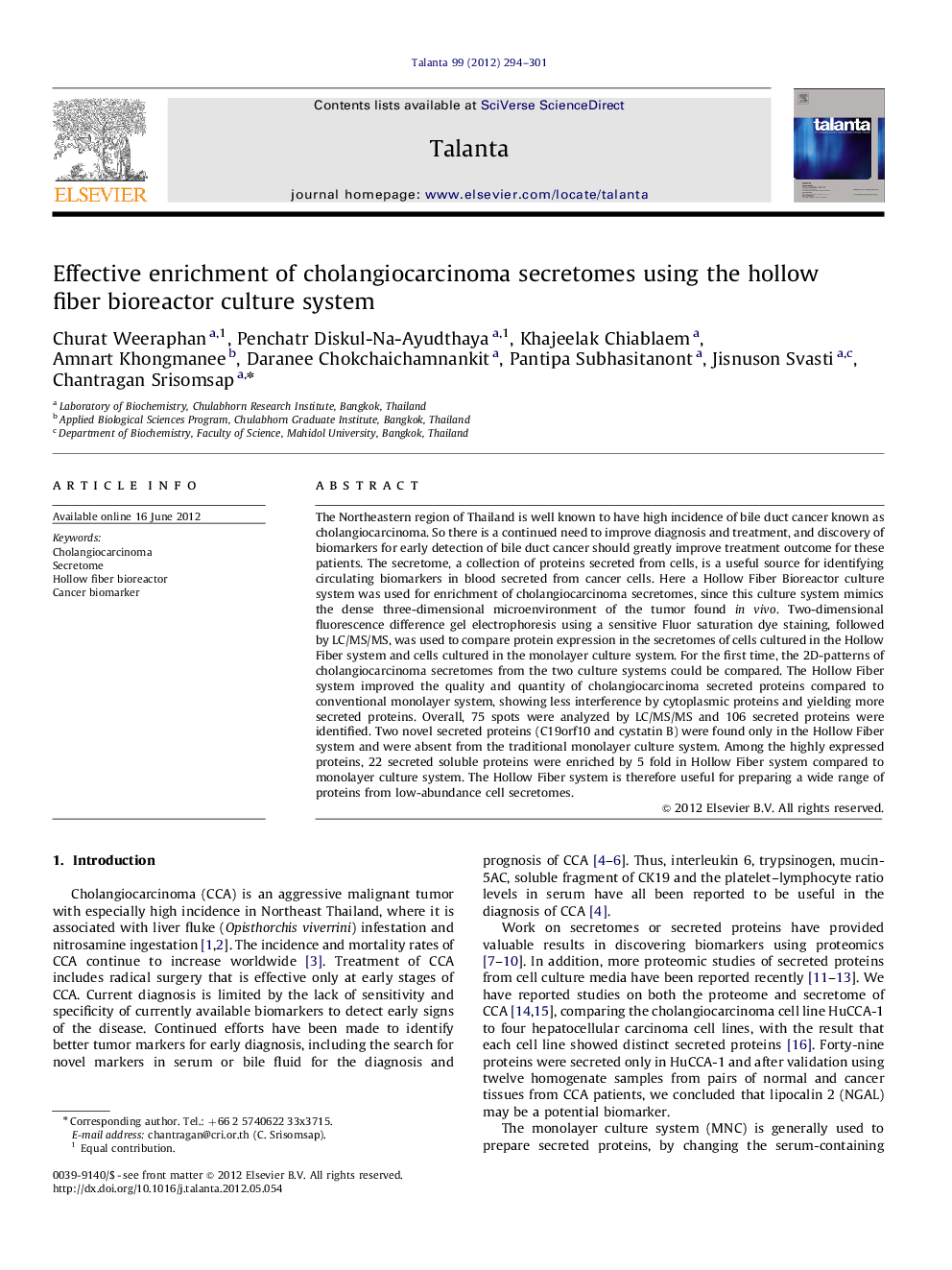| Article ID | Journal | Published Year | Pages | File Type |
|---|---|---|---|---|
| 7685456 | Talanta | 2012 | 8 Pages |
Abstract
The Northeastern region of Thailand is well known to have high incidence of bile duct cancer known as cholangiocarcinoma. So there is a continued need to improve diagnosis and treatment, and discovery of biomarkers for early detection of bile duct cancer should greatly improve treatment outcome for these patients. The secretome, a collection of proteins secreted from cells, is a useful source for identifying circulating biomarkers in blood secreted from cancer cells. Here a Hollow Fiber Bioreactor culture system was used for enrichment of cholangiocarcinoma secretomes, since this culture system mimics the dense three-dimensional microenvironment of the tumor found in vivo. Two-dimensional fluorescence difference gel electrophoresis using a sensitive Fluor saturation dye staining, followed by LC/MS/MS, was used to compare protein expression in the secretomes of cells cultured in the Hollow Fiber system and cells cultured in the monolayer culture system. For the first time, the 2D-patterns of cholangiocarcinoma secretomes from the two culture systems could be compared. The Hollow Fiber system improved the quality and quantity of cholangiocarcinoma secreted proteins compared to conventional monolayer system, showing less interference by cytoplasmic proteins and yielding more secreted proteins. Overall, 75 spots were analyzed by LC/MS/MS and 106 secreted proteins were identified. Two novel secreted proteins (C19orf10 and cystatin B) were found only in the Hollow Fiber system and were absent from the traditional monolayer culture system. Among the highly expressed proteins, 22 secreted soluble proteins were enriched by 5 fold in Hollow Fiber system compared to monolayer culture system. The Hollow Fiber system is therefore useful for preparing a wide range of proteins from low-abundance cell secretomes.
Related Topics
Physical Sciences and Engineering
Chemistry
Analytical Chemistry
Authors
Churat Weeraphan, Penchatr Diskul-Na-Ayudthaya, Khajeelak Chiablaem, Amnart Khongmanee, Daranee Chokchaichamnankit, Pantipa Subhasitanont, Jisnuson Svasti, Chantragan Srisomsap,
